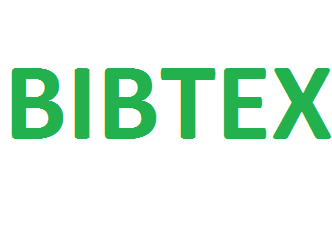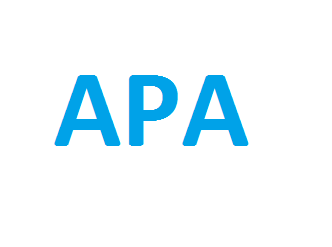
The Academic Perspective Procedia publishes Academic Platform symposiums papers as three volumes in a year. DOI number is given to all of our papers.
Publisher : Academic Perspective
Journal DOI : 10.33793/acperpro
Journal eISSN : 2667-5862
Kalkülüs Derslerinde Geogebra Fonksiyonlarından Nasıl Yararlanılabilir?
Abdullah Özkale
951
503
Abstract
Teknoloji destekli matematik eğitiminde farklı program ve aplikasyonların etkilerinin genişletilmesi perspektifinde bu çalışmada lisans/önlisans düzeyinde ele alınan kalkülüs dersleri için örnek etkinlikler ele alınmaktadır. Bu çalışmanın amacı kalkülüs dersleri için hazırlanacak GeoGebra ekinkilerinde öğreticilere yol göstermesi açısından enstrümantal orkestrasyon boyutlarına ışık tutan tartışmalar sunmaktadır. Çalışmada kalkülüs eğitimi için GeoGebra programından nasıl yararlanılacağı ve etkinliklerin enstrümantal orkestrasyon türleri ile nasıl zenginleştirilebileceği üzerinde durulmaktadır. Çalışma kapsamında önerilen etkinlikler etkinlik tasarım parametreleri ve enstrümantal orkestrasyon türleri ile birlikte ele alınarak düzenlenmiştir. Özellikle COVID-19 Pandemi süreciyle birlikte uzaktan eğitim formatının genişleyen ağında öğrenenlerin ders ve çalışma motivasyonlarının teknoloji destekli etkinliklerle artırılması beklenmektedir. Uygulamalı ve mesleğe dönük yönü itibariyle kalkülüs derslerinde kullanılabilecek matematiksel simülasyonlarla ders süreçlerinin zenginleştirilebileceği ve öğrenenlerin kavramsal gelişimlerinin beslenebileceği, bu deneyimin gerçek hayat becerilerine yansıtılabileceği düşünülmektedir.
Keywords:
GeoGebra, enstrümantal yaklaşım, kalkülüs, teknoloji destekli matematik eğitimi
References
[1] Adams R.A. & Essex, C. (2010). Calculus, Pearson.
[2] Ainley, J., Banks, D., & Fleming, M. (2002). The influence of IT: Perspectives from five Australian schools. Journal of computer assisted learning, 18(4), 395-404.Bransford, J. D., Brown, A. L. ve Cocking, R. R. (2000). How people learn: Brain, mind experience, and school. Washington, DC: National Academy Press.
[3] Ayyıldız, A. (2020). Geogebra destekli öğretimin ilköğretim matematik öğretmeni adaylarının akademik performanslarına ve motivasyonlarına etkisi: Diziler örneği. Necmettin Erbakan Üniversitesi Ereğli Eğitim Fakültesi Dergisi, 2(2), 152-174.
[4] Baltacı, S., & Yıldız, A. (2015). Matematik Öğretmen Adaylarının Geogebra Yazılımı Yardımıyla Analitik Geometrideki Bir Konuyu Öğrenme Süreçleri. Ahi Evran Üniversitesi Kırşehir Eğitim Fakültesi Dergisi,16(3), 295-312.
[5] Birgin, O., & Acar, H. (2020). The effect of computer-supported collaborative learning using GeoGebra software on 11th grade students’ mathematics achievement in exponential and logarithmic functions. International Journal of Mathematical Education in Science and Technology, 1-18.
[6] Bittinger, M. L., Beecher, J. A., Ellenbogen D.J., Penna, J.A. (2017). Kalkülüse Giriş: Grafiker ve Modeller (Çev. Ed. Civan, Y.) Ankara: Nobel Yayınevi.
[7] Celen, Y. (2020). Student Opinions on the Use of Geogebra Software in Mathematics Teaching. Turkish Online Journal of Educational Technology-TOJET, 19(4), 84-88.
[8] Demirbilek, M., & Özkale, A. (2014). GeoGebra kullanımının önlisans matematik öğretimine etkinliğinin incelenmesi. Necatibey Eğitim Fakültesi Elektronik Fen ve Matematik Eğitimi Dergisi, 8(2), 98-123.
[9] Haspekian, M. (2005). An “instrumental approach” to study the integration of a computer tool into mathematics teaching: the case of spreadsheets. International journal of computers for mathematical learning, 10(2), 109-141.
[10] Hohenwarter, M., Jarvis, D., & Lavicza, Z. (2009). Linking Geometry, Algebra, and Mathematics Teachers: GeoGebra Software and the Establishment of the International GeoGebra Institute. International Journal for Technology in Mathematics Education, 16(2).
[11] Hass, J. (2018). Thomas' calculus. Pearson.
[12] Juandi, D., Kusumah, Y. S., Tamur, M., Perbowo, K. S., & Wijaya, T. T. (2021). A meta-analysis of Geogebra software decade of assisted mathematics learning: what to learn and where to go?. Heliyon,7(5).
[13] Kepçeoğlu, İ., & Yavuz, İ. (2017). The Effect of GeoGebra on Achievement of Preservice Mathematics Teachers About Concepts of Limit and Continuity. Necatibey Faculty of Education Electronic Journal of Science & Mathematics Education, 11(1).
[14] Leung, A. & Bolite Frant, J. (2015). Designing mathematics tasks: The role of tools In A. Watson & M.Ohtani (eds.) Task design in mathematics education. 191-227. NY: Springer .
[15] Merriam, S. B. ve Grenier, R. S. (2019). Qualitative research in practice: Examples for discussion and analysis. CA: John Wiley & Sons.
[16] Miles, R. (2021). An alternative route to the Mandelbrot set: connecting idiosyncratic digital representations for undergraduates. Teaching Mathematics and its Applications: An International Journal of the IMA, 40(1), 72-82.
[17] Ozmantar, M.F. ve Bingolbali, E. (2009). Etkinlik tasarımı ve temel tasarım prensipleri. In Bingolbali, E., Ozmantar, M.F. (Ed), Ilkoğretimde Karşılaşılan Matematiksel Zorluklar ve Çözüm Önerileri. Ankara: Pegem Akademi.
[18] Stewart, J., Clegg, D. K., & Watson, S. (2020). Calculus: early transcendentals. MA: Cengage Learning.
[19] Sevimli, E., & Delice, A. (2016). Bilgisayar cebir sistemi destekli öğretimin kavramsal-işlemsel yeterliklere etkisinin incelenmesi: integral örneği. Hacettepe Üniversitesi Eğitim Fakültesi Dergisi, 31(2), 1-17.
[20] Weinhandl, R., Lavicza, Z., Hohenwarter, M., & Schallert, S. (2020). Enhancing flipped mathematics education by utilising GeoGebra. International Journal of Education in Mathematics, Science and Technology, 8(1), 1-15.
[21] Yıldırım, A. ve Şimşek, H. (2008). Sosyal bilimlerde nitel araştırma yöntemleri (9. Baskı). Ankara: Seçkin Yayıncılık.
[22] Zengin, Y. (2017). Komşuluk ve Yığılma Noktası Kavramlarının Dinamik Matematik Ortamında Keşfedilmesi Üzerine Bir Araştırma. Mehmet Akif Ersoy Üniversitesi Eğitim Fakültesi Dergisi, (43), 302-333.
[23] Zengin, Y., & Tatar, E. (2014). Türev Uygulamaları Konusunun Öğretiminde Geogebra Yazılımının Kullanımı. Kastamonu Eğitim Dergisi, 22(3), 1209-1228.
[24] Zill, D., & Wright, W. S. (2011). Calculus: Early Transcendentals. MA: Jones & Bartlett Learning.
[25] http-1. https://www.atilim.edu.tr/tr/ects/site-courses/201/12131/detail
[26] http-2.https://www.anadolu.edu.tr/akademik/fakulteler/ders/82509/calculus-ii-genel-matematik-ii/ders-icerik
[27] http-3.https://obs.sdu.edu.tr/Public/EctsCourseDetails.aspx?DersNo=130400181160510200&Bolum No =5102&BirimNo=51&DersBolumKod=MAT-181
[28] http-4. https://fenedebiyat.yeditepe.edu.tr/tr/fizik-matematik/dersler/173
Cite
-
 %0 Academic Perspective Procedia (ACPERPRO) Kalkülüs Derslerinde Geogebra Fonksiyonlarından Nasıl Yararlanılabilir?% A Abdullah Özkale% T Kalkülüs Derslerinde Geogebra Fonksiyonlarından Nasıl Yararlanılabilir?% D 12/26/2021% J Academic Perspective Procedia (ACPERPRO)% P 33-40% V 4% N 3% R doi: 10.33793/acperpro.04.03.9% U 10.33793/acperpro.04.03.9
%0 Academic Perspective Procedia (ACPERPRO) Kalkülüs Derslerinde Geogebra Fonksiyonlarından Nasıl Yararlanılabilir?% A Abdullah Özkale% T Kalkülüs Derslerinde Geogebra Fonksiyonlarından Nasıl Yararlanılabilir?% D 12/26/2021% J Academic Perspective Procedia (ACPERPRO)% P 33-40% V 4% N 3% R doi: 10.33793/acperpro.04.03.9% U 10.33793/acperpro.04.03.9
© Academic Perspective 2018. All rights reserved.




